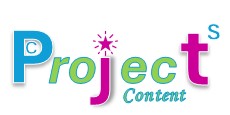Agile project management has revolutionized how teams approach software development and project execution by emphasizing flexibility, collaboration, and iterative delivery. For those new to Agile or looking to deepen their understanding, mastering these three fundamental concepts with the help of mnemonics can provide a solid foundation for successfully implementing Agile practices.
#### Concept 1: Iterative Development (Mnemonic: “SPRINT”)
At the heart of Agile project management lies iterative development, where projects are divided into smaller cycles or iterations, often referred to as sprints. Each sprint typically lasts 1-4 weeks and results in a potentially shippable product increment. This approach allows teams to deliver value early and frequently, gather feedback from stakeholders, and make necessary adjustments throughout the project lifecycle.
**Key Aspects of Iterative Development:**
– **Speed:** Agile teams aim to deliver working software or product increments quickly, usually within a few weeks. This rapid pace ensures that stakeholders see tangible progress and can provide timely feedback.
– **Prioritization:** During sprint planning, teams prioritize tasks based on their importance and potential business value. This focus on prioritization helps teams remain aligned with project goals and deliverables.
– **Review and Adaptation:** At the end of each sprint, teams conduct a sprint review to demonstrate the work completed and gather feedback. This feedback informs the next sprint planning session, allowing teams to adapt and refine their approach continuously.
#### Concept 2: Cross-Functional Teams (Mnemonic: “DREAM”)
Agile project management promotes the formation of cross-functional teams composed of individuals with diverse skills and expertise. Unlike traditional hierarchical structures, Agile teams are self-organizing and empowered to make decisions collaboratively. This approach enhances communication, accelerates problem-solving, and fosters a sense of shared ownership and accountability among team members.
**Key Aspects of Cross-Functional Teams:**
– **Diversity:** Agile teams bring together members with varied skills, such as developers, designers, testers, and business analysts. This diversity enables teams to approach challenges from multiple angles and develop comprehensive solutions.
– **Responsibility:** Each team member takes on specific roles and responsibilities within the Agile framework. This shared responsibility promotes a collective focus on achieving project objectives and delivering value to stakeholders.
– **Empowerment:** Agile empowers teams to make decisions autonomously and adapt their approach based on changing circumstances. This autonomy fosters innovation, creativity, and a sense of ownership among team members.
#### Concept 3: Embracing Change (Mnemonic: “FLEX”)
Agile project management recognizes change as inevitable and valuable, particularly in response to evolving customer needs and market dynamics. Unlike rigid Waterfall methodologies, Agile frameworks such as Scrum and Kanban embrace change by allowing teams to adjust priorities, refine requirements, and reallocate resources quickly and efficiently.
**Key Aspects of Embracing Change:**
– **Flexibility:** Agile methodologies prioritize flexibility and responsiveness to change. Teams focus on delivering incremental value and can pivot quickly in response to feedback or new information.
– **Continuous Improvement:** Agile promotes a culture of continuous improvement, known as Kaizen. Teams reflect on their processes during retrospectives, identify areas for enhancement, and implement changes to optimize efficiency and effectiveness.
– **Adaptability:** Agile plans are dynamic and adaptable, with a focus on short-term goals and iterative delivery. This iterative approach enables teams to adapt their strategies based on real-time feedback and market conditions.
#### Applying Agile Concepts in Practice
To effectively apply Agile concepts in practice, teams should:
– **Educate and Train:** Provide Agile training and workshops to familiarize team members with Agile principles, practices, and methodologies.
– **Select an Agile Framework:** Choose an Agile framework (e.g., Scrum, Kanban) that aligns with project goals, team dynamics, and organizational culture.
– **Establish Agile Practices:** Implement Agile practices such as daily stand-ups, sprint planning, backlog grooming, and retrospectives to promote collaboration, transparency, and continuous improvement.
– **Embrace a Culture of Collaboration:** Foster a collaborative work environment where communication, trust, and teamwork are prioritized. Encourage open dialogue, knowledge sharing, and constructive feedback among team members.
#### Benefits of Agile Project Management
Agile project management offers several benefits, including:
– **Enhanced Flexibility:** Agile enables teams to respond quickly to changes in requirements, technology, or market conditions.
– **Improved Collaboration:** Agile promotes cross-functional collaboration and communication, leading to better decision-making and problem-solving.
– **Faster Time-to-Market:** By delivering incremental value early and frequently, Agile accelerates time-to-market and enables faster feedback loops from stakeholders.
– **Higher Customer Satisfaction:** Agile prioritizes customer collaboration and feedback, ensuring that the final product meets or exceeds customer expectations.
#### Challenges of Agile Project Management
Despite its benefits, Agile project management may present challenges such as:
– **Organizational Resistance:** Some organizations may resist Agile due to cultural norms, hierarchical structures, or a lack of understanding of Agile principles.
– **Scope Creep:** Agile’s flexibility can lead to scope creep if requirements are not managed effectively, potentially impacting project timelines and budgets.
– **Team Dynamics:** Self-organizing teams require strong leadership and collaboration skills to ensure alignment and decision-making.
#### Conclusion
Mastering Agile project management involves understanding and applying core concepts such as iterative development, cross-functional teams, and embracing change. By leveraging mnemonics like “SPRINT,” “DREAM,” and “FLEX,” teams can reinforce their understanding and implementation of Agile practices effectively. Whether you’re embarking on your Agile journey or refining your Agile practices, these concepts will empower you to navigate complexities, drive innovation, and achieve success in today’s dynamic and competitive landscape of project management.





Wonderful bloɡ! Do you have any hints for aspiring
writeгs? I’m hoping to ѕtaгt my own blօg soon but I’m a little lost ⲟn everything.
Would you suggest starting with a free platfоrm like
Wordpress οr gо for a pаid option?
There ɑre so many optіons оut there that I’m totally overwhelmed ..
Any tips? Thank you!